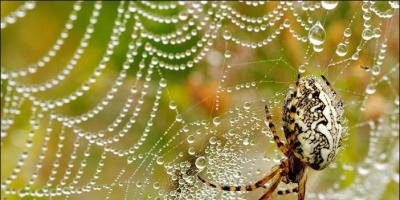The Karambit is an ancient Indonesian knife from the eleventh century. A karambit combat knife can be made without resorting to . To make a high-quality neat knife small size we will use simple tools to remove metal, that is, with a regular hacksaw, emery, file and sandpaper.Karambit - can be effectively used as a . It is not a piercing weapon. They can only perform cutting actions and only inside blade.
To make a karambit knife, we need a piece of steel plate (carbon tool steel 01) 3-5 mm thick. The size of the knife can be any - to your taste
A brief overview of the manufacturing process of a karambit knife
Make a test knife out of cardboard and turn it into a template. Use the template to cut out the shape of the knife and handle. Glue the template onto the steel plate and use a hacksaw to cut out the shape of the knife. If you have a grinder, it’s better to use it, of course. This will significantly speed up your work.
Try to cut as close to the contour line of the knife as possible. So that later there will be less work with a file, with the help of which we will bring the final shape of the karambit knife. At this stage of making a karambit knife, sandpaper or tape can be very useful to us. Power tools make metal work much easier.
Now we need to drill three holes in the shank of the knife. Two for attaching a handle, and a third large hole for a finger. The finger hole is 1 inch in diameter.
Use a paper template to mark where the two holes for the handle should be. After this, you can drill them on or using a drill. For drilling big hole use the most big drill, what you have, and then the hole can be widened using a half-round file to the desired size.
Now we need to make bevels on the knife blade. File one side down to the middle of the end (you can draw a dividing line along the end). Then we turn the knife over and work on the other side. Just don’t make it too sharp yet, otherwise during hardening, we will ruin the cutting edge.
Making the handle of a karambit knife
Use your handle template to draw its shape on a piece of wood: one inch thick, two inches wide and five inches long.Use whatever tools you have available to cut away the excess wood from the knife handle. We need two identical halves of the handle. Now we need to drill holes in them. To do this, use the shank of the knife, where we have already made them earlier.
Now let's connect both halves of the handle to the blade using wooden tongues and continue processing the handle on grinding machine or manually using a file. Once you have given the final shape to the handle, it can be sanded using fine sand. sandpaper.
Now all the wooden handle linings can be removed and you can begin.
Hardening and tempering of a karambit knife
First, with the help of hardening, we will achieve the hardness of steel. To do this, heat the knife to 1500 degrees Fahrenheit. Simply put, red-hot (the blade should acquire a bright red color). You can also use a magnet. As soon as the blade stops being attracted to the magnet, it means that we have reached the desired temperature and it needs to be cooled sharply. Cool the knife in used machine oil or vegetable oil. Thus, we will achieve great hardness of the blade.
Be careful when lowering hot metal into oil. It can burst into flames. Use long pliers or a metal rod with a hook at the end to hold the knife. And of course, protect your hands with canvas mittens and wear thick clothing or a blacksmith apron.
After hardening the steel, you need to temper it (first clean the body of the knife with sandpaper). Tempering of steel is carried out in order to give it greater ductility, otherwise the blade can quickly break because after hardening it becomes hard but brittle.
Steel tempering is carried out as follows. Heat the blade to approximately 450 degrees Fahrenheit. Place the knife over the coals and heat it, turning it evenly and regularly from one side to the other. Do not place the blade too close to the coals to avoid overheating it. If you accidentally overheat it, you will have to re-harden it again. When tempering, heat the steel to the color of wheat and let it cool naturally.
After the blade has completely cooled down, it must be thoroughly sanded using first the finest-grained sandpaper, then newspaper and polishing paste.
Now let's do it final assembly handle, connecting it with glue and copper rivets. We will do the final grinding of the handle and rivets.
Paper knife? Yes, it’s real, and moreover, if you approach the matter responsibly, it looks exactly like the real thing. The karambit knife is quite popular among connoisseurs of edged weapons, and gamers are also familiar with it firsthand. This type of knife is similar to a blade, the shape is slightly curved, there is a handle on which there is a ring for index finger. Let's figure out how to make karambit from paper.
Content:
Popular karambit from the game CS:GO
Karambit was not always so popular. The game Counter Strike: Global Offensive brought him fame and public recognition. In the game, the cost of such a knife is equal to 15 thousand rubles, but those CS fans who did not have the opportunity to acquire virtual edged weapons came out of the situation and came up with a diagram on plain paper for the desired knife.

This scheme is suitable for any material: even if you are a fan of wooden objects, even if you are going to use regular A4 paper, plywood or cardboard.
Paper karambit: gluing method
Very important point is gluing all the elements of the knife. The shape and then how the subsequent coating will lie on the base depends on this method. Therefore, let's figure out how to properly perform the gluing step.
- Once you have cut out several templates, apply PVA glue to each layer and attach to each other;
- Saturate with super glue (also called cyanoacrylate), that is, drop a few drops of glue on the ends and wide parts, and then spread the entire consistency over the craft with a small piece of paper. The glue should cover everything without leaving any gaps.
Advice! Glue the blade first, and then the handle. And only after that attach both components to each other.
- When the entire product is thoroughly dry after the glue, coat it with automotive primer. And only after that you can paint with aerosol paints.
Advice! For the handle it is better to choose matte paint.
Cardboard karambit

To start working on karambit, prepare:
- thick paper or cardboard (plywood or wood can be used);
- simple pencil;
- sharp knife or jigsaw;
- glue;
- sandpaper.
Let's get to work.
Step 1. Draw or print a diagram of the knife, the dimensions should not go beyond A4 paper.
Step 2. If you chose plywood, wood or cardboard, then simply spread glue on the paper and lean it against the material that will be the base of the knife.

Advice! Considering that at the end of working on the knife, the paper will need to be removed, use PVA glue for these purposes.
Step 3. Cut out the knife elements using the template. Use a jigsaw to work with plywood and wood to better processing material.

Advice! When cutting out parts, step back from the extreme lines by 2-4 mm to avoid possible mistakes.
Step 4. All cut out elements are glued to each other like a sandwich. Use PVA glue (can be replaced with wood glue).

Step 5. Sand all nicks and sharp spots with sandpaper (if the craft is made of plywood or wood).

Step 6. Remove the top stencil using gentle movements. Try to avoid getting wet while doing this, otherwise the whole craft will soften and lose its shape.
Step 7. Color the resulting paper knife the way you want. And you can use it.
The colors of this knife in the game Counter Strike are completely different. You can choose one of them by looking at the picture:

Video instructions
Watching the video, as always, encourages a detailed study of the algorithm of actions.
Paper karambit:
Karambit made from cardboard "Tiger's Tooth":
Karambit is a very specific melee weapon that suddenly became popular thanks to the game Call of Duty: Black Ops, as well as numerous negative and positive characters appearing in famous films and TV series. So today, a knife in the shape of a tiger fang has become a popular toy. How to make karambit from paper interests many boys and their dads.
Design Features
Karambit is a blade designed specifically for Asian martial art silat. The shape is very specific, related to the purpose of the item. No wonder its second name is the killer’s dagger. The photo shows a sample of karambit.

The knife has a curved blade and is held with a reverse grip, that is, sharpened towards you. To prevent the blade from slipping out of wet palms, there is a hole in its handle, usually for the middle finger. The blade is sharpened along the inner fold. The handle is usually made of hard wood, the blade is secured with a rivet.

The dimensions of the CS GO blade are small - from 3 to 10 cm, but there are modifications up to 30 cm in length. In addition, it can have 2 blades, the handle can be made without a hole, and so on.

Surprise is the main trump card of karambit in close combat. The tiny blade, 5 cm long, is completely invisible until it is used in battle. The main goal in this case is to defeat the arms and legs, that is, to incapacitate the opponent. However, using the weapon requires experience.

The blade, as can be seen from its shape, is designed to make ripping cuts, not piercing ones, which, by the way, makes it a good weapon for immobilizing an enemy, but bad for killing. When wounded, the tip of the knife rips the skin along the surface, immediately disabling the entire muscle. In order for the weapon to be truly lethal, deadly poisons were previously applied to its blade.

A karambit knife made from CS GO paper does not have such devastating properties, but it imitates them convincingly.

Materials and tools
To make a CS GO knife you will need not only a drawing, but also certain materials.
- A4 paper - in accordance with the thickness of the product, but taking into account the fact that the main part must be glued together from at least 30 sheets.
- PVA glue.
- Pencil and scissors.
How to make a karambit knife from paper
The scheme of operation is extremely simple. The complexity can only come from the drawing, or rather, the chosen model.

The game, however, requires a rather beautiful model of the product, and its drawing, naturally, will be more complicated.
- There are essentially two schemes common on the Internet. According to the first, it is necessary to cut out all the parts separately, and then assemble them according to the drawing one by one. This kind of DIY work takes a lot of time. But, it’s true, the blade is textured and looks impressive.
- The second type of scheme involves assembling a base - a blade plus a handle, and gluing the most prominent parts onto it. Moreover, the part itself plays the role of a template. The assembly scheme in this case is much simpler, since it includes fewer elements. The photo shows a development of karambit.
You can use plastic, cardboard, or paper as a material, but paper is the most affordable, and although this method takes more time to complete, it is simple and understandable.
Sequencing
- A paper drawing of karambit is printed on an A4 sheet, then all the details are cut out and, using them as templates, transferred to all other sheets of paper. You can do it differently: print the templates on required quantity sheets.
- Then all the elements are cut out of paper with scissors. This takes about 2–3 hours.
- The parts are glued together. The glue is applied with a brush: this way the work will be done neatly. For the main part - the blade and handle - you will need at least 30 elements. It is recommended to glue them together in groups of 10, and then glue the 3 main ones. As a rule, a load is not required, but it will not be superfluous either.
- Then a large relief part is glued onto the handle - in the range of 18–20 pieces. from each side. The photo shows the moment of sticking the knife parts.
- Thinner elements are glued last - 4-5 pieces each.
- The finished karambit is placed under a load for at least 2–3 hours.
- The knife is painted in accordance with its purpose.
- To give the product additional strength, it can be coated with furniture varnish.
The video explains in detail how to make karambit out of paper with your own hands.
Karambit is a short knife with a curved blade. It has a sharpening on the inside and special form handles with a special ring for the index finger. As a rule, this weapon is taken with a reverse grip, which is most convenient for carrying out ripping movements. Due to its unusual shape, this knife is very popular not only among bladed weapon lovers and collectors, but also among gamers who will not confuse it with any other knife. How to make karambit with your own hands?
 Karambit has a small (approximately 3 to 10 centimeters) sickle-shaped blade, the blade of which is sharpened along the internal curve, and a handle in the head of which there is a hole for a finger
Karambit has a small (approximately 3 to 10 centimeters) sickle-shaped blade, the blade of which is sharpened along the internal curve, and a handle in the head of which there is a hole for a finger
The birthplace of this knife is Sumatra, where it was often compared to a tiger claw due to its unusual shape. Not only appearance, but the blows inflicted by karambit also resemble cuts from the claws of an angry beast.
There are still many hypotheses regarding the historical origin of the knife:
- The first of these suggests that the knife was previously used in cockfighting, tied to the bird's paws instead of spurs, which allowed the rooster to wound his opponent.
- The second hypothesis suggests that this combat knife was a formidable weapon of the Malaysians. They often used it in battles, possessing a unique technique.
None of the hypotheses have been proven, and therefore the origin of this knife, as well as its original purpose, remain unknown for certain.
Model manufacturing technology
The model of such a knife will be a wonderful gift for any gamer or adventure movie lover. You can do it yourself.
Material selection
 Using a jigsaw you can easily cut the blade and handle of a knife out of wood.
Using a jigsaw you can easily cut the blade and handle of a knife out of wood. Since our knife will only be a model, the requirements for it will relate exclusively to appearance. Therefore, karambit can be made from the following materials:
- Paper or cardboard. Since the model is from thin sheet paper will be unattractive, it is best to use thick cardboard. This material It has sufficient rigidity and is very easy to process, which is why absolutely any model can be made from it.
- Plywood. Having a jigsaw, you can easily cut the blade and handle of expanded clay from wood. As a result you will get beautiful model, which after painting will become an excellent shelf decoration.
- Plasticine. This option suitable for children to make younger age. Externally, karambit made from plasticine is unattractive.
- Lego. With a little imagination, you can easily assemble such a knife from Lego parts.
Drawing
The basis of any model is a drawing. Therefore, before you make karambit from paper, you need to have a diagram of the future knife. You can do it yourself or use it already ready-made option from the Internet. The following sequence of actions should be followed:
- An A4 sheet is taken and a drawing is drawn or printed on it.
- Next, the drawing should be cut out using sharp scissors.
- The diagram is applied or glued to the base from which the parts will be cut. When working with wood or plywood, it is best to use PVA glue to fix the drawing.
- Using a jigsaw or scissors (depending on the base material), the parts of the future knife are cut out.
Lever
 The hilt is usually made of hardwood and attached to the blade with a copper rivet, the sheath (if equipped) is made of wood or leather and sometimes plastic
The hilt is usually made of hardwood and attached to the blade with a copper rivet, the sheath (if equipped) is made of wood or leather and sometimes plastic If we are talking about a plywood, cardboard, plasticine knife or a model assembled from Lego, then in these cases the knife handle is made of the same material as the blade. Often the model itself is one-piece, but if desired, you can create it from two elements: a handle and a blade.
In this case, the handle should consist of two identical parts, between which the blade will be placed, like a real knife.
Having finished cutting the handle along the contour, you need to carefully cut a hole intended for the index finger. It is a mandatory element of such a knife.
Advice! If, as a result of cutting out the model, excess material or uneven edges arise, they should be processed using sandpaper.
Blade
As mentioned above, the blade is cut from the same material as the handle. It should be smoothly curved like a cat's claw. There should be no nicks, cuts or uneven edges here. It is advisable to eliminate all defects with fine sandpaper, which will allow us to “sharpen” our knife with inside. This will make the model attractive.
Model assembly
As a result of cutting, you should have three parts: two identical parts of the handle and one part of the blade. Now all that remains is to connect them together. For this, it is best to use PVA glue. The model should be assembled using the following algorithm:
- Spread with glue internal surfaces handle parts.
- Glue is also applied to the hidden part of the blade, which will be located between the halves of the handle.
- We place the blade on one part of the handle and press it tightly with the other.
When making karambit from Lego or plasticine, the model will be solid.
How to make a karambit with a metal blade?
 For a karambit with a metal blade, it would be useful to make a leather sheath
For a karambit with a metal blade, it would be useful to make a leather sheath The most simple models karambit, which anyone can make. But what if you want more and are interested in an exact replica of the legendary knife? Then the following algorithm will help you realize your dream:
- To make a blade you will need a disk from circular saw. It should be cleaned of grease and rust using sandpaper.
- After this, the surface is completely degreased using any modern solvent. Degreasing is necessary to ensure that the protective layer does not fall off during electrical corrosion of the workpiece.
- Carefully cut out the drawing of the knife.
- Using undiluted nitro varnish, the cardboard drawing is glued to the disk.
- Then the drawing is outlined with tin wire connected to the negative terminal of the power supply and the disk itself. The wire is fixed with superglue.
- An electrochemical reaction is carried out, the purpose of which is to separate the blade from the steel disk.
- When the workpiece is separated from the disk, you can use sandpaper and a file to sharpen it, or sharpen the future knife on a power tool.
- Using a grinding tool, the blade is ground on both sides.
- Wood or plastic can be used to make the handle. A wooden handle, as a rule, consists of two parts glued together. Metal rivets can also be used as fastening.
As a result of the above actions, you can get not only a beautiful model that perfectly conveys the appearance of karambit, but also a full-fledged knife, which can be both an original souvenir and a means of self-defense. This homemade karambit will surely please all fans original types edged weapons.
When planning to make your own karambit, you should follow these recommendations:
- Cardboard or wooden model After production, it is better to paint it, so it will look more attractive.
- You should not start manufacturing with complex models with many carved elements.
- After applying PVA glue to the parts, they should be pressed tightly, holding for a minute.
- It would be useful to make a leather sheath for a karambit with a metal blade.
Thus, making a model of a short curved knife is not difficult. Now you know how to make karambit from various materials.

In this instruction we will look at how easy it is to make a knife like a karambit. A special feature of these knives is the curved shape of the blade. There are many versions of what these knives were intended for and where they originated. In most cases, these knives are associated with the tiger claw, and its purpose is self-defense. Such a knife lies comfortably in the hand and will instantly make the attacker change his outlook on life.
There is also a version that these knives resemble a cock’s spur, and according to another legend, similar knives were used for cockfighting. There are also versions that such a knife can be used for some craft purposes, for example, cutting some plants. One way or another, let's hope that you will use such a weapon for good.
Making such a knife is not difficult, and you can get by with fairly simple tools. The product is all-metal, so no Additional materials you won't need it. The author cut out the profile with a grinder.
If you need such a knife on the farm, then it makes sense to make it from high-quality steel. Steel with high content carbon can be hardened. When cutting, carbon steel produces thick yellow sparks and is found in cutting blades, files and other tools. So, let's take a closer look at how to make such a knife!
Materials and tools used by the author:
List of materials:
- carbon steel.
List of tools:
- Bulgarian;
- belt grinder;
- drilling machine;
- drill;
- various files;
- sandpaper;
- forge furnace;
- polishing machine.
The process of making a karambit knife:
Step one. Making a template
First of all, we need to make a knife template. To do this, we make some drawings on a computer or manually. Next, print out the resulting drawing and cut it out with a utility knife. That's all, the template is ready, trace it on the workpiece with a marker and you can start cutting. Before drawing the drawing, the author cleaned the metal on a belt grinding machine.






Step two. Hole
First, we drill a hole in the workpiece using a bit. This strategic hole is for fingers. To securely hold the blade, most karambit style knives have it. Drill the hole slowly and lubricate the bit well. We always securely fix the workpiece and under no circumstances hold it with our hands, since if the metal breaks out, it will cause serious injuries to our hands.



Step three. Cut out the main rough profile
Let's start cutting out the main profile. For these purposes the author used an ordinary grinder. To cut out the curves, we make a lot of cross cuts, and then cut them out in parts. As a result, teeth will remain, which can also be removed with a grinder by installing a sanding disc.


Step four. Grinding
We go to the belt sander and carefully grind the blade along the contour. It is important for us to remove all the notches and sharpen the blade in the shape it was originally intended to be. In most cases, the author uses 400 grit tape.







Next we have to do some manual processing. We clamp the workpiece in a vice and work with files of different shapes. We process the blade along the contour where we could not get close with the tape machine, and also grind the hole.
Step five. Cutting out windows in a pen
The author decided to cut out windows in the handle, so the knife looks more interesting. To solve this problem, take a drill and drill a series of holes the desired shape. As a result, we then combine all the resulting holes using a file or the same drill. We thoroughly process the resulting windows with files.










Step six. Forming bevels
It's time to form the bevels on the knife. To do this, we clamp the blade into a special bracket made of corners, since it will be difficult to hold it with your hands due to heating. The author forms the bevels by eye using a belt sander. But first it would be good to mark everything out. The grain size of the tape for such work can be around 400 units. You should complete all the basic metal work at this step, as the next step is hardening, and the metal will become strong.




Step seven. Hardening
Now is the time to harden the blade, this will make it very strong. For proper hardening, it is important to know the grade of steel. We send the blade to the forge, it needs to be heated until the metal is no longer attracted by the magnet, but these are only approximate figures. Well, then cool the blade in oil.


Now the blade should be hardened, but after this the metal will become brittle, the blade may crumble simply when dropped. We need to make the blade more elastic so that it springs back under load. To do this, metal is tempered. Usually a household oven is used, time and temperature regime we choose depending on the steel grade. On average, the blade is heated for about an hour at a temperature of around 200 degrees Celsius. The straw color of the metal will indicate the release. That's all, now we have a blade of excellent quality.
Step eight. Final processing
Now, after hardening, the metal needs to be sanded again, or you can leave it as is, this patina will act as protection against rust. We grind the surfaces on a belt sander and use it to sharpen the blade. As for the holes, they can be processed using a drill. As an option, the author screwed a piece of sandpaper onto the rod and clamped it in the drill chuck; this attachment also works great.
That's all, all you have to do to finish is polish your creation on a polishing machine. That's all, the project is over,








